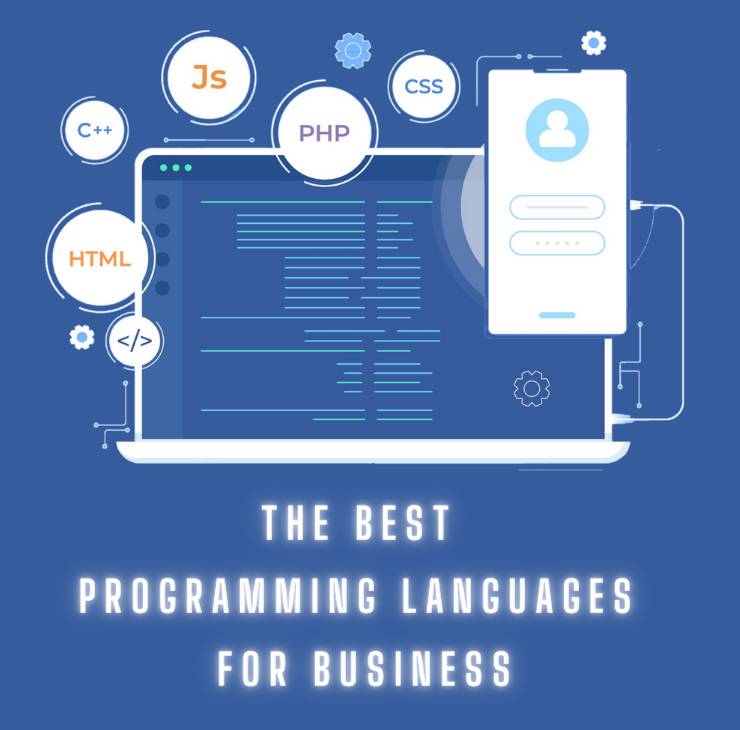In the modern era dominated by digital advancements, the selection of an appropriate Programming Languages for Business holds paramount importance for businesses. Whether you’re crafting internal tools, customer-centric applications, or streamlining operations, your choice of Programming Languages for Business can profoundly influence your efficiency, scalability, and ultimate triumph. Given the multitude of options at your disposal, it becomes imperative to meticulously assess the merits and demerits of each, thus pinpointing the language that best aligns with your organizational objectives. In this exhaustive handbook, we will delve deep into the unique attributes of various Programming Languages for Business to assist you in pinpointing the ideal match for your business requisites.
Understanding Your Business Imperatives
Before plunging into the intricacies of Programming Languages for Business, it’s imperative to gain a comprehensive understanding of your business imperatives. Delve into factors such as your industry’s intricacies, project complexities, scalability prerequisites, existing technological framework, and the proficiency level of your development team. By elucidating these facets, you’ll be empowered to select a Programming Languages for Business that adeptly addresses your distinct business challenges and aspirations.
Python: one of Programming Languages for Business
Python has rightfully earned its moniker as the “Jack-of-All-Trades” in the realm of Programming Language for Business, owing to its versatility, simplicity, and extensive array of applications. From web development to data analytics, machine learning, and automation, Python’s intuitive syntax and vast libraries render it the preferred choice for developers spanning a diverse industry. Below, we mention several features of Python:
Versatility and Clarity
One of Python’s most noteworthy attributes is its clarity. The language’s lucid and succinct syntax mirrors plain English, rendering it accessible to novices and seasoned developers alike. This clarity not only fosters collaboration and code maintenance but also expedites the development process.
Swift Prototyping and Iteration
Python’s dynamic nature and interpreted execution facilitate swift prototyping and iteration. Developers can swiftly translate concepts into code, validate hypotheses, and refine solutions with minimal overhead. This agility proves particularly invaluable in fast-paced settings where swift time-to-market is imperative.
Robust Ecosystem of Libraries and Frameworks
Python’s forte lies in its extensive ecosystem of libraries and frameworks catering to a plethora of use cases. For web development, frameworks like Django and Flask offer sturdy frameworks for crafting scalable and feature-rich applications. In the realms of data science and machine learning, libraries such as NumPy, Pandas, scikit-learn, and TensorFlow empower researchers and engineers to analyze data, train models, and deploy solutions with aplomb.
Automation and Scripting Prowess
Python’s versatility transcends conventional software development into the realms of automation and scripting. With modules like os, shutil, and subprocess, Python simplifies mundane tasks such as file management, system administration, and process automation. Its cross-platform compatibility ensures seamless execution across diverse operating systems sans any modifications.
Robust Community Backing and Documentation
Python boasts a vibrant and supportive community comprising developers, educators, and enthusiasts worldwide. This community-driven ethos fosters collaboration, knowledge dissemination, and continual enhancement. Furthermore, Python’s extensive documentation and online resources serve as invaluable learning aids for developers across all proficiency levels.
“Also Read: 7 best factors to Choosing the Right Programming Language for Business”
Unleashing the Potential of JavaScript as a Programming Languages for Business in Dynamic Web Experiences

JavaScript stands tall as a formidable force in the domain of web development, empowering creators to craft dynamic, engaging user interfaces that transcend boundaries. From front-end magic to backend wizardry, JavaScript’s adaptability and omnipresence position it as an indispensable asset in the arsenal of modern developers.
Elevating User Interaction and Experience
At its essence, JavaScript shines brightest in elevating the interactivity and overall experience of web applications. By dynamically manipulating the Document Object Model (DOM), JavaScript allows developers to seamlessly update content, respond to user inputs, and construct immersive interfaces that captivate and captivate users. Frameworks such as React, Angular, and Vue.js serve as force multipliers, equipping developers with potent instruments to forge single-page applications (SPAs) and progressive web apps (PWAs) that rival native counterparts.
Embracing Asynchronous Paradigms and AJAX
JavaScript’s asynchronous programming paradigm plays a pivotal role in facilitating fluid communication with servers and fetching data dynamically, all without impeding the user interface. Techniques like Asynchronous JavaScript and XML (AJAX) empower web applications to retrieve and refresh content asynchronously, resulting in smoother, more responsive user journeys. This asynchronous prowess proves invaluable in handling tasks like fetching data from APIs, processing form submissions, and executing background operations seamlessly.
Pioneering Cross-Platform Compatibility
With the advent of Node.js, JavaScript transcends its conventional bounds as a client-side scripting language and extends its dominion into server-side realms. Node.js empowers developers to construct scalable, high-performance applications using JavaScript as a Programming Languages for Business on the server, harnessing event-driven, non-blocking I/O to manage concurrent connections with aplomb. This unified paradigm in web development fosters code reusability, streamlines maintenance efforts, and accelerates development cycles, as developers Programming Languages for Business wield JavaScript prowess across both client and server domains.
Thriving on Community and Ecosystem
JavaScript thrives within a sprawling ecosystem teeming with libraries, frameworks, and tools, buoyed by a vibrant community of creators. From stalwart libraries like jQuery and lodash to robust frameworks such as Express.js and React, JavaScript offers a treasure trove of resources to expedite development and tackle common hurdles. Moreover, the advent of package managers like npm and stalwart build tools like webpack and Babel further amplifies JavaScript’s allure as a Programming Languages for Business, empowering developers to manage dependencies, optimize code, and automate workflows with finesse.
Java: The Backbone of Corporate Applications
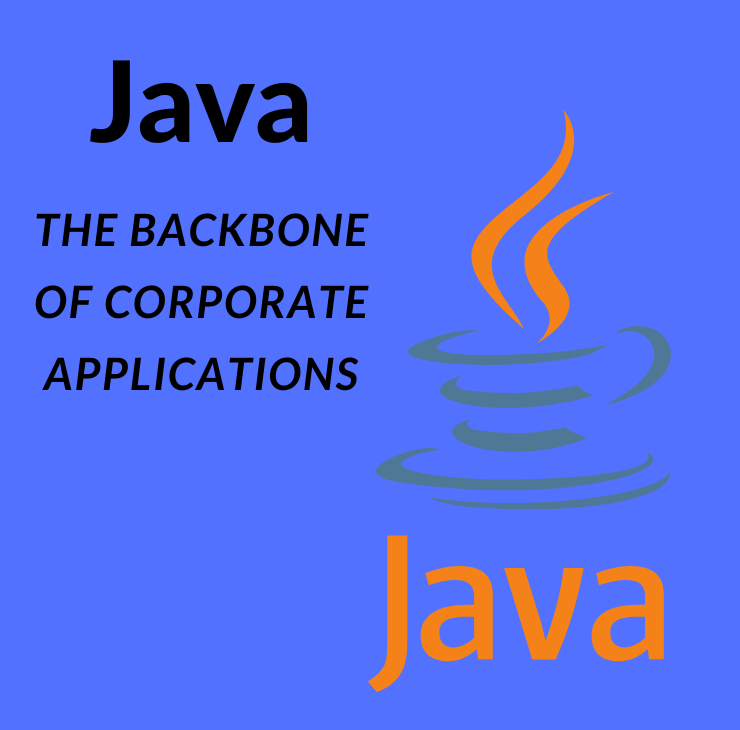
Java stands as the cornerstone of Programming Language for Business, celebrated for its dependability, scalability, and adaptability. With its sturdy framework, extensive libraries, and compatibility across various platforms, Java empowers enterprises to construct vital systems, corporate applications, and expansive projects with assurance.
Freedom from Platform Limitations and Easy Mobility
A defining characteristic of Java is its liberation from platform constraints, made possible through the Java Virtual Machine (JVM). By translating Java code into bytecode, runnable on any device or OS supporting JVM, Java allows developers to write code once and deploy it anywhere—a concept epitomized by the phrase “write once, run anywhere” (WORA). This platform independence simplifies software deployment, minimizes compatibility issues, and future-proofs applications against technological shifts.
Strength and Reliability
Java’s emphasis on reliability and robustness renders it ideal for crafting corporate-grade applications demanding high availability and resilience. The language’s robust typing, exception handling, and memory management capabilities aid developers in creating resilient code capable of withstanding real-world production environments. Furthermore, Java’s mature ecosystem of frameworks, including Spring and Jakarta EE, equips developers with tools to construct scalable, sustainable architectures aligned with the requirements of contemporary Programming Languages for Businessapplications.
Expansion and Efficiency
Java’s scalability and performance play pivotal roles in facilitating the expansion and advancement of corporate systems. With its support for multithreading, Java empowers developers to devise concurrent and parallel applications, effectively harnessing modern hardware capabilities. Additionally, Java’s Just-In-Time (JIT) compilation and optimization methodologies enhance runtime performance, rendering it suitable for handling extensive data volumes, managing transactional workloads, and supporting high-traffic web applications.
Security and Regulatory Compliance
Security holds paramount importance in corporate settings, and Java’s built-in security features mitigate risks associated with software vulnerabilities and cyber threats. Java’s sandboxing mechanism confines untrusted code, preventing unauthorized access to critical system resources and thwarting malicious activities like unauthorized data access or code execution. Moreover, Java’s support for cryptographic algorithms, secure communication protocols, and adherence to industry standards such as ISO/IEC 27001 and PCI DSS ensure that corporate applications meet stringent security requirements and regulatory mandates.
Thriving Community and Ecosystem
Java thrives on a diverse and dynamic community of developers, organizations, and contributors driving its continual evolution and innovation. From open-source libraries and frameworks to commercial tools and platforms, Java offers an array of resources supporting corporate Programming Languages for Businessdevelopment endeavors. Additionally, Java’s long-term support (LTS) releases and commitment to backward compatibility instill confidence in businesses regarding the durability and stability of their Java investments.
One of Programming Languages for Business called: GO

Go, affectionately known as Golang, stands out as a compelling solution for constructing scalable, high-performance applications capable of meeting the demands of contemporary computing landscapes. Originating from Google, Go emphasizes simplicity, effectiveness, and concurrency, rendering it particularly well-suited for crafting distributed systems, cloud-native applications, and infrastructure software.
Concurrency Empowered by Goroutines
Central to Go’s approach to concurrency lies goroutines, lightweight threads of execution facilitating concurrent programming with minimal overhead. Goroutines empower developers to craft concurrent code adept at efficiently leveraging multicore processors and managing thousands of concurrent tasks concurrently. Through the utilization of goroutines and channels—facilitating data synchronization between goroutines—developers can use GO as a Programming Languages for Business to design highly concurrent, responsive applications that seamlessly scale across distributed systems.
Streamlined Memory Management
Go’s runtime environment features a garbage collector proficient in managing memory allocation and deallocation with efficiency, thereby alleviating developers from the manual burden of memory resource management. This automated memory management ensures that applications retain responsiveness and performance, even when subjected to heavy workloads. Furthermore, Go’s static typing and compilation to native machine code contribute to its performance optimization, empowering developers to construct swift and efficient applications without compromising safety or productivity.
Robust Standard Library and Tooling
As an one of Programming Languages for Business prides GO itself on a robust standard library that equips developers with an extensive array of tools and packages for constructing a diverse spectrum of applications. Spanning networking and concurrency to cryptography and web development, the standard library furnishes modules that streamline common tasks and diminish reliance on external dependencies. Moreover, Go’s intrinsic support for package management, testing, and profiling simplifies the development lifecycle, enabling developers to write, test, and refine code effortlessly.
Microservices and Cloud-Native Architecture
As the industry gravitates towards microservices architecture and cloud-native development methodologies, Go has garnered acclaim for its suitability in crafting scalable, resilient services and applications. Its compact binary size, swift startup time, and minimal runtime dependencies position it as an optimal choice for containerized deployments and serverless computing environments. Additionally, Go’s innate support for concurrency and networking empowers developers to devise distributed systems adept at handling high-throughput, low-latency workloads seamlessly.
Flourishing Community and Adoption
Go thrives on the support of a burgeoning community comprising developers, organizations, and enthusiasts who contribute to its ecosystem and champion its adoption. From burgeoning startups to tech behemoths, entities across diverse sectors are harnessing Go to pioneer innovative solutions addressing scalability, performance, and reliability imperatives. The language’s emphasis on simplicity, effectiveness, and developer productivity renders it an enticing prospect for endeavors spanning web services and APIs to infrastructure automation and cloud-native applications.
Rust: Where Safety Meets Performance in Critical Systems
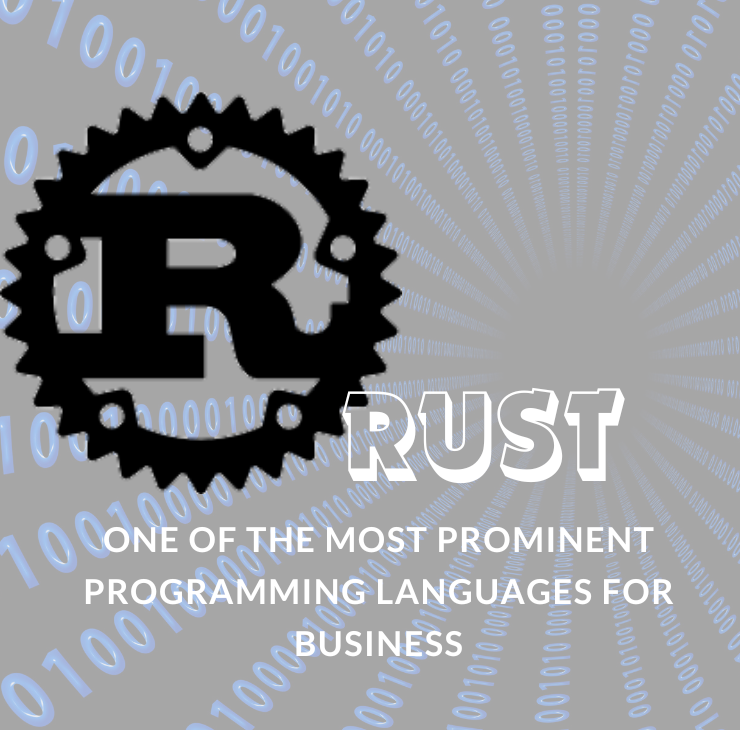
Rust is one of the most prominent programming languages for business and has won widespread acclaim for its distinctive blend of safety, performance, and efficiency, rendering it an optimal choice for constructing mission-critical systems and performance-centric applications. Developed by Mozilla, Rust empowers programmers to craft code that delivers both swiftness and security, all while maintaining unwavering reliability and user-friendliness.
Memory Safety Reinforced by Ownership Model
At the heart of Rust’s safety prowess lies its ownership model, which imposes stringent guidelines for memory management during compilation. By capitalizing on concepts such as ownership, borrowing, and lifetimes, Rust ensures memory safety and preemptively thwarts common programming pitfalls like null pointer dereferencing, buffer overflows, and data races. This proactive memory management approach not only eradicates numerous bug classes but also obviates the necessity for garbage collection, resulting in consistent performance and diminished runtime overhead.
Harnessing Concurrency and Parallelism
Rust’s fearless concurrency model empowers developers to craft concurrent code with assurance, harnessing features like threads, async/await, and message passing to construct scalable and responsive systems. The language’s stress on zero-cost abstractions and meticulous control over memory allocation facilitates efficient hardware resource utilization, rendering Rust well-suited for parallel processing and distributed computing. Furthermore, Rust’s ownership and borrowing regulations avert commonplace concurrency pitfalls such as data races and deadlocks, thereby ensuring reliability and correctness in concurrent programming.
Unparalleled Performance and Optimization
Rust’s dedication to performance transcends memory safety, encompassing the efficient execution and optimization of code. Equipped with a contemporary compiler toolchain and potent optimizer, Rust generates highly optimized native machine code that rivals the performance of other types of programming languages for business such as C and C++. Moreover, Rust’s support for zero-cost abstractions and granular control permits developers to fine-tune performance-critical code segments without compromising safety or code clarity. This fusion of safety and performance positions Rust as an irresistible choice for constructing applications where speed and reliability reign supreme.
Flourishing Community and Robust Ecosystem
Rust thrives on a burgeoning community of programmers, contributors, and entities deeply invested in its continual evolution and adoption. From fledgling startups to industry behemoths, organizations spanning diverse sectors are embracing Rust for endeavors spanning system programming and embedded development to web services and game development. The language’s dynamic ecosystem of libraries, frameworks, and utilities further expedites development endeavors and nurtures innovation, empowering developers to fashion robust, scalable solutions effortlessly.
Swift: Revolutionizing iOS and macOS Development

Apple’s brainchild, Swift, has swiftly emerged as one of the programming languages for business for crafting iOS and macOS applications. Boasting a contemporary syntax, performance enhancements, and robust safety features, Swift empowers developers to craft sophisticated, efficient, and feature-laden apps that provide seamless user interactions within Apple’s ecosystem.
Cutting-Edge Syntax and Articulation
A hallmark of Swift lies in its contemporary and articulate syntax, elevating developer efficiency and code readability. Drawing inspiration from languages such as Python and Ruby, Swift offers a succinct and intuitive syntax that streamlines routine programming tasks and curtails boilerplate code. With features like optionals, generics, and type inference, developers can craft cleaner, safer code while retaining adaptability and expressiveness.
Performance and Streamlining
Swift’s performance optimizations and granular control render it ideal for architecting high-performance applications across iOS and macOS platforms. Leveraging Apple’s LLVM compiler and runtime environment, Swift generates optimized native code that optimally utilizes resources while minimizing overhead. Moreover, Swift’s native support for functionalities like automatic reference counting (ARC) and value semantics aids in optimizing memory usage and mitigating performance bottlenecks, culminating in swift and responsive applications.
Security and Dependability
In Swift, safety takes precedence, with the language integrating contemporary programming paradigms to preempt common coding errors and fortify code resilience. Swift’s robust typing, optionals, and error handling mechanisms serve as bulwarks against errors, identifying issues at compile time and reducing the incidence of runtime crashes, thereby enhancing application stability. Furthermore, Swift’s memory management model, encompassing automatic memory management and ARC, simplifies memory administration tasks and diminishes the likelihood of memory leaks and dangling pointers.
Thriving Community and Ecosystem
Backed by a vibrant and burgeoning community of developers, educators, and aficionados, Swift thrives within its ecosystem and spearheads innovation. With the open-source release of Swift and the establishment of the Swift.org community, developers gain access to a treasure trove of resources, frameworks, and utilities for crafting iOS and macOS applications. From ubiquitous frameworks like SwiftUI and Combine to third-party libraries and developer utilities, Swift’s ecosystem continues to burgeon, enabling developers to engineer pioneering and captivating experiences for Apple aficionados worldwide, thus revolutionizing programming languages for business.
C#: Empowering Windows and .NET Development with Programming Languages for Business

In the realm of Windows and .NET development, C# stands as an undeniable powerhouse, offering a robust, adaptable, and feature-laden language for crafting a diverse array of applications and services. Boasting strong typing, efficient garbage collection, and comprehensive framework support, C# equips developers with the tools needed to construct scalable, high-performance solutions tailored to the Microsoft ecosystem.
Flexibility and Cross-Platform Adaptability
In the realm of Programming Languages for Business, C# has traditionally been associated with Windows development. However, it has evolved significantly, especially with initiatives like .NET Core and Xamarin. Through the advent of .NET Core, developers now possess the capability to construct and deploy C# applications across an array of platforms, spanning from Windows and Linux to macOS. Additionally, Xamarin empowers developers to write C# code and share vital business logic across iOS, Android, and Windows platforms, streamlining the creation of native mobile applications with a unified codebase.
Extensive Framework Support
Within the domain of Programming Languages for Business, C# stands out for its extensive support framework. Leveraging a robust ecosystem of .NET frameworks, libraries, and tools, C# accelerates development processes and facilitates rapid time-to-market for applications. The .NET framework furnishes developers with an exhaustive suite of APIs tailored for crafting desktop, web, and cloud-based applications, while frameworks like ASP.NET Core offer contemporary web development features such as MVC, Web API, and SignalR. Furthermore, the inclusion of NuGet—a versatile package manager for .NET—simplifies the integration of third-party libraries and components into C# projects, augmenting productivity and expandability.
Comprehensive Integrated Development Environment (IDE) Assistance
C# development receives robust backing from integrated development environments such as Visual Studio and Visual Studio Code, offering comprehensive functionalities for code editing, debugging, and project administration. Visual Studio’s extensive array of extensions and plugins empowers developers to personalize their development environment to align with their preferences and workflow. Moreover, Visual Studio’s seamless integration with Azure services streamlines cloud development and deployment, enabling developers to effortlessly construct, test, and deploy C# applications to the cloud with minimal hassle.
Scalability and Performance Fit for Enterprise Environments
C# proves itself adept at constructing enterprise-grade applications necessitating scalability, dependability, and optimal performance. Armed with features like asynchronous programming, parallel processing, and memory management optimizations, C# equips developers to craft applications capable of managing high-volume workloads and scaling to meet the exigencies of contemporary business landscapes. Additionally, C#’s integration with SQL Server and other database technologies furnishes developers with potent tools for constructing data-centric applications boasting robust data access and manipulation capabilities.
Vibrant Community and Support Ecosystem
Within the realm of Programming Languages for Business, C# benefits from a dynamic and active community of developers, contributors, and Microsoft partners who enrich its ecosystem and provide invaluable support through forums, documentation, and online repositories. Microsoft’s unwavering commitment to the ongoing advancement and refinement of C# ensures that the language retains its relevance and competitiveness amidst the ever-evolving software development landscape. Furthermore, Microsoft’s Azure cloud platform offers an abundance of resources and services tailored for hosting, managing, and scaling C# applications, further enhancing the development journey for C# enthusiasts.
TypeScript’s Static Typing: A Crucial Component of Programming Languages for Business
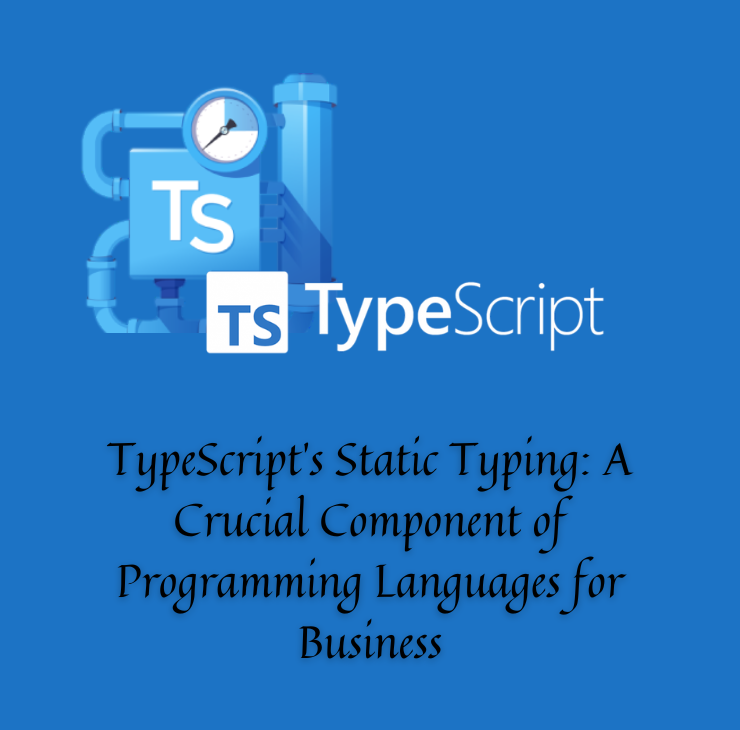
TypeScript stands out as a formidable asset in advancing JavaScript development through the integration of static typing. Originating from Microsoft, TypeScript furnishes developers with the advantages of static type validation, facilitating early error detection and elevating the caliber of code, all while preserving compatibility with existing JavaScript codebases. As businesses increasingly rely on efficient and reliable software solutions, embracing TypeScript’s static typing becomes imperative in optimizing development workflows and ensuring robustness in programming languages for business.
Harnessing Static Typing and Type Inference
At the core of TypeScript lies its robust support for static typing, empowering developers to define types for variables, functions, and objects during compilation. This capability enables TypeScript to intercept type-related discrepancies during the development phase, such as mismatched types or erroneous method invocations, preempting potential runtime errors. Moreover, TypeScript’s prowess in type inference automatically deduces types from context, mitigating the necessity for explicit type declarations and amplifying developer efficiency.
Fostering Code Quality and Manageability in Programming Languages for Business
Through the adoption of static typing, TypeScript plays a crucial role in enhancing code quality and manageability within programming languages for business. By providing clearer documentation and enforcing stricter contracts across various parts of the codebase, TypeScript promotes a more organized development process.Through explicit type annotations, developers gain deeper insights into the intended usage of variables and functions, facilitating comprehension of the code and identification of potential bugs. Furthermore, TypeScript’s type system advocates for improved code structuring and modularization, laying the foundation for more manageable and scalable applications in the realm of programming languages for business.
Empowering Tooling and Developer Experience
The static type system of TypeScript catalyzes the development of robust tooling and IDE support, encompassing features like code navigation, auto-completion, and refactoring utilities. Esteemed IDEs such as Visual Studio Code and JetBrains WebStorm offer comprehensive support for TypeScript, delivering functionalities such as intelligent code recommendations, real-time error detection, and automated code formatting. These tools augment developer experience and productivity, enabling the creation of cleaner, more dependable code with reduced errors and manual intervention.
Seamlessly Integrating with the JavaScript Ecosystem
In the realm of Programming Languages for Business, TypeScript stands out for its seamless integration with the prevailing JavaScript ecosystem. It coexists effortlessly with JavaScript code, allowing developers to progressively adopt TypeScript without the hassle of extensive code rewrites. Moreover, TypeScript extends its support to popular JavaScript libraries and frameworks, enabling developers to utilize existing tools and resources while enjoying the advantages of static typing.
Community and Adoption
Witnessing widespread adoption across the industry, TypeScript has emerged as the preferred language for expansive JavaScript projects among numerous companies and developers. Bolstered by an active and burgeoning community, TypeScript receives regular updates and contributions from developers worldwide. Microsoft’s unwavering commitment to TypeScript, coupled with its open-source nature and extensive support, ensures TypeScript’s pivotal role in advancing JavaScript development for years to come.
PHP: Revolutionizing Dynamic Web Content and Server-Side Scripting
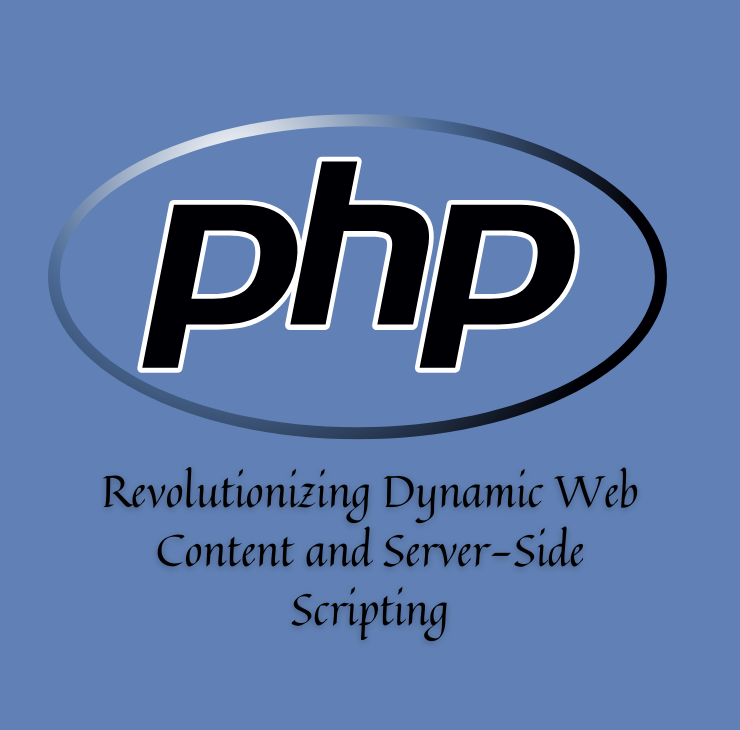
PHP stands tall as the bedrock of web development, spearheading dynamic web content and server-side scripting across countless websites and web applications. Its innate simplicity, adaptability, and extensive feature repertoire empower developers to craft dynamic, immersive web experiences that captivate users and deliver tailor-made interactions in real-time.
Unleashing Dynamic Content Generation through Server-Side Scripting
PHP’s prowess shines brightest in its adeptness at executing server-side scripts, granting developers the freedom to seamlessly integrate PHP code into HTML files for on-the-fly content generation. With PHP at their disposal, developers can fashion dynamic web pages that react to user inputs, interface with databases, and curate personalized content driven by user preferences or system data. This server-side magic lays the groundwork for crafting dynamic websites, e-commerce hubs, content management systems (CMS), and web applications that dynamically adapt and morph in response to user engagements and data dynamics.
Seamless Versatility and User-Friendliness
In the realm of Programming Languages for Business, TypeScript stands out for its seamless integration with the prevailing JavaScript ecosystem. It coexists effortlessly with JavaScript code, allowing developers to progressively adopt TypeScript without the hassle of extensive code rewrites. Moreover, TypeScript extends its support to popular JavaScript libraries and frameworks, enabling developers to utilize existing tools and resources while enjoying the advantages of static typing.
Flourishing Ecosystem of Frameworks and Libraries
PHP thrives within a flourishing ecosystem brimming with frameworks, libraries, and extensions that augment its capabilities and streamline development workflows. Frameworks such as Laravel, Symfony, and CodeIgniter furnish developers with potent tools and established conventions for erecting scalable, maintainable web applications, while libraries like Composer streamline dependency management and package integration. Additionally, PHP’s extensive repository of built-in functions and extensions equips developers to tackle an extensive array of tasks, spanning from file manipulation and database interaction to encryption and image manipulation, sans the need for reinventing the wheel.
Enriching Community Support and Iterative Advancement
Programming Languages for Business like PHP basks in the embrace of a lively and engaged community comprising developers, contributors, and aficionados who collaborate, exchange insights, and contribute to the perpetual evolution of the language. The PHP community’s steadfast dedication to openness, inclusivity, and continual enhancement ensures PHP’s sustained relevance and competitiveness within the ever-evolving realm of web development. Regular iterations and updates, coupled with feedback-centric development methodologies, guarantee PHP’s perpetual alignment with the exigencies of developers and enterprises alike.


